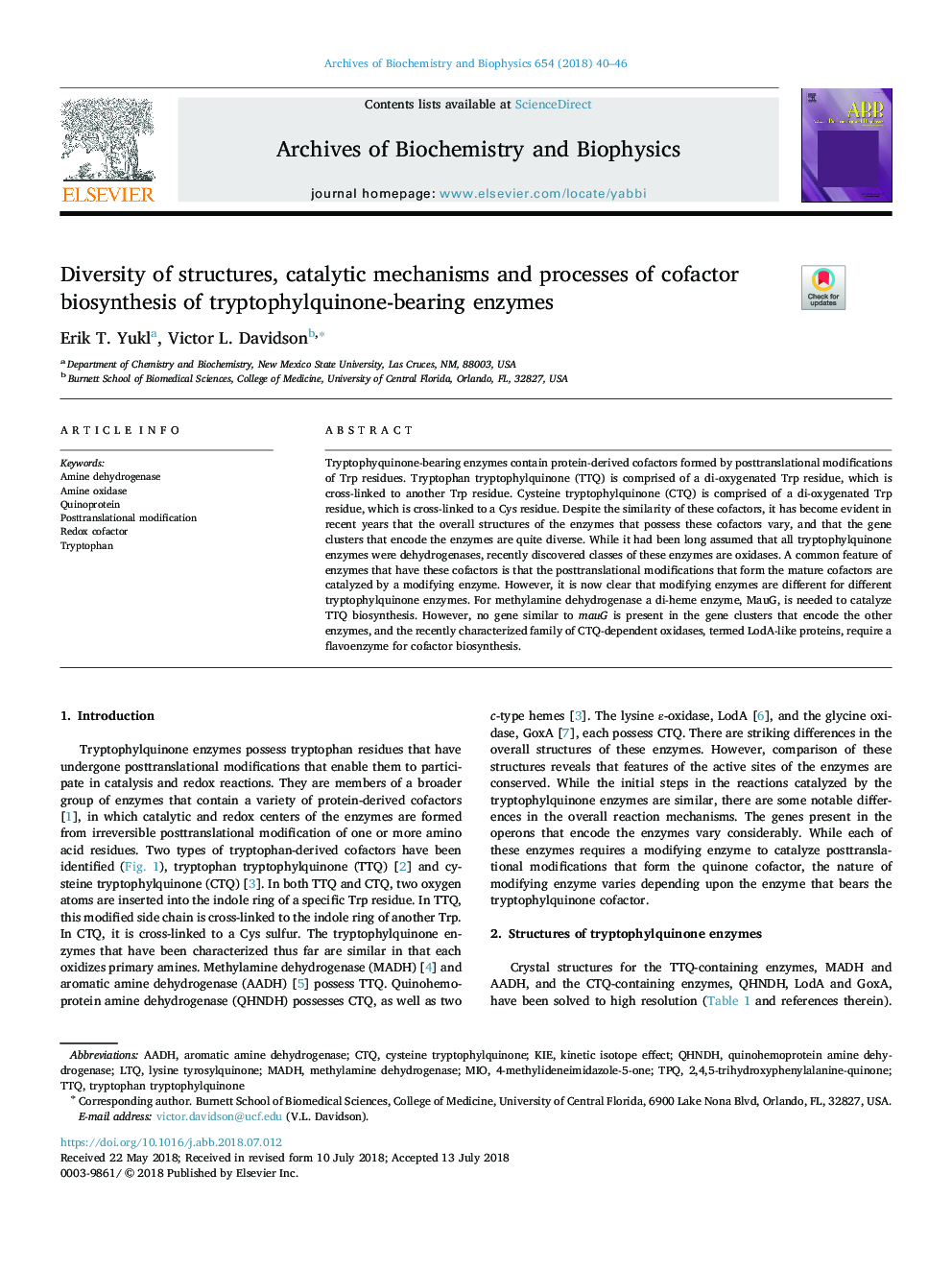| Article ID | Journal | Published Year | Pages | File Type |
|---|---|---|---|---|
| 8288459 | Archives of Biochemistry and Biophysics | 2018 | 7 Pages |
Abstract
Tryptophyquinone-bearing enzymes contain protein-derived cofactors formed by posttranslational modifications of Trp residues. Tryptophan tryptophylquinone (TTQ) is comprised of a di-oxygenated Trp residue, which is cross-linked to another Trp residue. Cysteine tryptophylquinone (CTQ) is comprised of a di-oxygenated Trp residue, which is cross-linked to a Cys residue. Despite the similarity of these cofactors, it has become evident in recent years that the overall structures of the enzymes that possess these cofactors vary, and that the gene clusters that encode the enzymes are quite diverse. While it had been long assumed that all tryptophylquinone enzymes were dehydrogenases, recently discovered classes of these enzymes are oxidases. A common feature of enzymes that have these cofactors is that the posttranslational modifications that form the mature cofactors are catalyzed by a modifying enzyme. However, it is now clear that modifying enzymes are different for different tryptophylquinone enzymes. For methylamine dehydrogenase a di-heme enzyme, MauG, is needed to catalyze TTQ biosynthesis. However, no gene similar to mauG is present in the gene clusters that encode the other enzymes, and the recently characterized family of CTQ-dependent oxidases, termed LodA-like proteins, require a flavoenzyme for cofactor biosynthesis.
Keywords
Related Topics
Life Sciences
Biochemistry, Genetics and Molecular Biology
Biochemistry
Authors
Erik T. Yukl, Victor L. Davidson,
